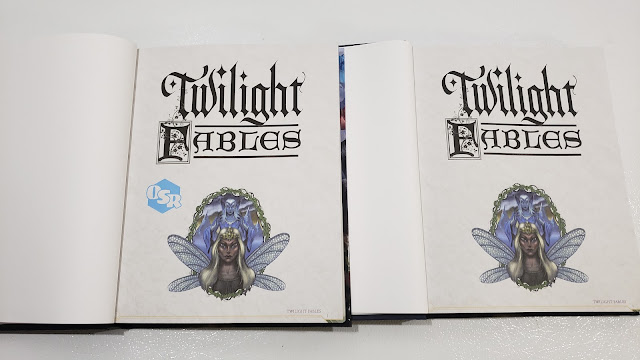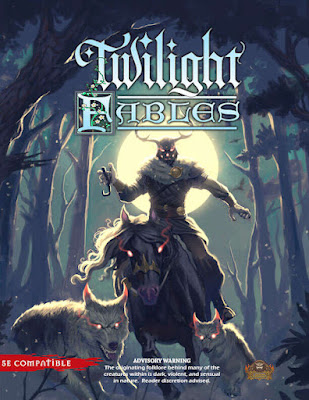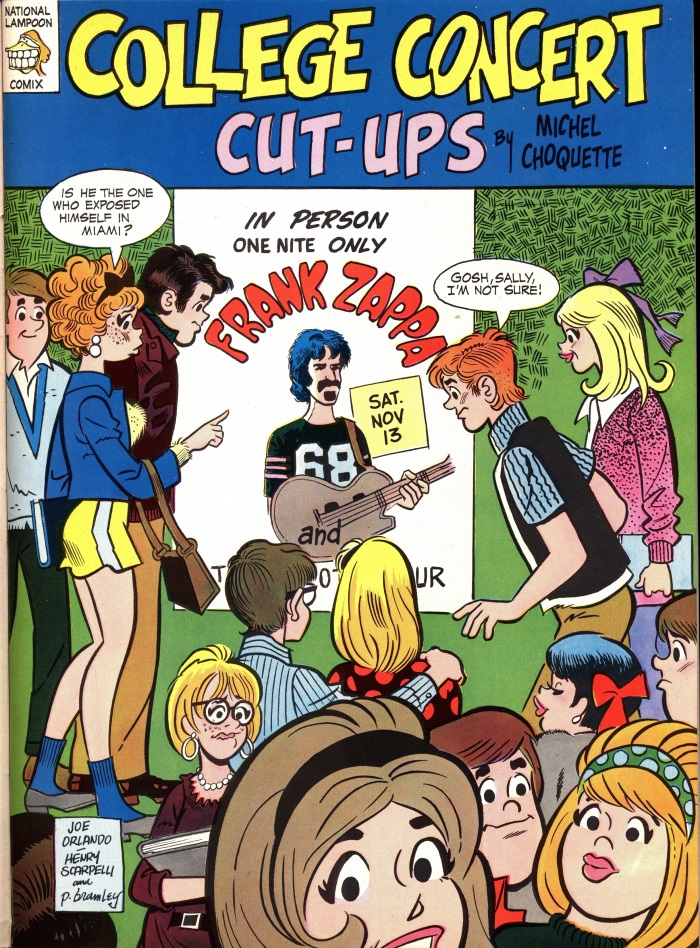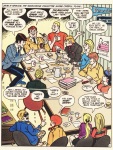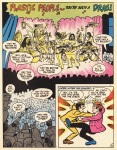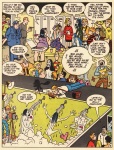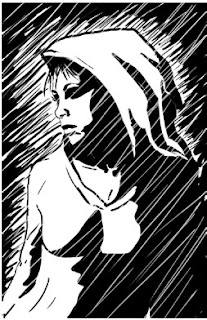 Cyberpunk
Cyberpunk is back. Or rather it returned in 2019. The original roleplaying game which drew from Cyberpunk literary subgenre—of which William Gibson’s
Neuromancer was a leading example—was first published by
R. Talsorian Games Inc. in 1988 as
Cyberpunk (now known as
Cyberpunk 2013) before being given a second edition with
Cyberpunk 2.0.2.0. in 1990. Putting aside the less than well-received
Cyberpunk V3.0 of 2005, what is in effect the fourth edition of the roleplaying game—
Cyberpunk RED: The Roleplaying Game of the Dark Future—came out ahead of the highly anticipated computer roleplaying game,
Cyberpunk 2077, but was not only designed as a standalone roleplaying game in its own right, being set in the year 2045, it also serves as a bridge between the period of
Cyberpunk 2.0.2.0. and the computer game. Thus there is much that will be familiar to the Game Master and the player of
Cyberpunk 2.0.2.0. There are the same ten character Roles, many of the MegaCorporations are still present, the same Interlock mechanics are used, as is the ‘Friday Night Firefight’ combat system. However,
Cyberpunk RED has almost post-Post Apocalypse feel to it, taking place in and around a city which is recovering and suffering from environmental and radiation damage, the influence of the MegaCorporations has been reduced, and mechanically, the Interlock system has been streamlined for ease of play.
Cyberpunk Red: The Roleplaying Game of the Dark Future takes place in the Time of the Red. The Golden Age of Cyberpunk, of freewheeling embrace of technology, acceptance of cyberware as a way of life, of easy access to the NET where Netrunning console cowboys and cowgirls jockeyed for prestige as raided corporate networks, of the massive growth of corporations as extraterritorial entities, all radically dividing the future into one of extreme haves and havenots... That ended on August 20th, 2023, when a ‘pocket nuke’ was detonated in the Arasaka headquarters in the west coast metroplex of Night City. It ended the Fourth Corporate War between Arasaka and Militech, devastated Night City, and brought economic and environmental devastation to the world, causing a depression which continues two decades on... It ended corporate domination, reducing corporations to being local and international; turned much of the USA into a new Wild West where safe travel could often only be promised by the Nomad tribes. For years after the nuclear detonation, the sky was red and still is at dawn dusk, leading the new age to be known as the Time of the Red.
Night City is a frontier town, an independent city state rebuilding after the effects of the bomb. Services, supplies, and law enforcement are what you pay for. The reduced corporations still supply and provide almost everything, from power to food to medical services to media, with goods often brought in by Nomad tribes that run transport in the new North America, independents do grow real food though, and whilst the corporations have their own security, freelancers and bodyguards are available for hire, though the city maintains a Maximum Force Tactical Division or ‘Psycho Squad’ or ‘MAX–TAC’ which handles cybernetic criminals or anyone suffering from Cyberpsychosis. As inhabitants of Night City, you get your information from city wide freestanding dataterms and news from screamsheets downloaded to a personal agent helps you with your daily life from phone calls to shopping; you wear clothing able to emit sounds and video, even monitor your condition; you do your shopping at self-contained, armed and armoured Vendits; you eat kibble or good prepack food if you can; and you go armed. Either a Polymer One-shot easily bought or printed, or something bigger purchased from a Fixer after it has been scavenged from the Fourth Corporate War or smuggled into the city and purchased at a secret Night Market. The same goes for Cyberware...
The world of
Cyberpunk RED is violent, neon cast, and dominated by technology to the point where it has been subsumed into the body. Cyberware enables humanity to be faster, stronger, have better senses, and more. Some have reacted to this mechanical invasion of the body with technoshock, but other have embraced it, living on the edge, taking advantage of their enhancements to be able to rip doors off with their cyberarms, drive their car or aerodyne with inhuman reflexes via interface plugs, tune into the infrared with cybereyes, or even cast their consciousness into local NET architectures at the speed of data. All to survive, make money, and build their rep. They are known as Edgerunners.
In terms of what you can play,
Cyberpunk RED offers ten Roles or Edgerunner types—Execs, Fixers, Lawmen, Medias, Medtechs, Netrunners, Nomads, Rockerboys, Solos, and Techs. Execs represent the MegaCorporations, protecting their interests and reputations; Fixers are dealmakers smugglers, organisers, and information brokers; Lawmen enforce what law they can on the streets and the highways; Medias are journalists, media stars, and influencers who bright stories to light and make names for themselves; MedTechs are street doctors, capable of patching up wounds and damage to flesh and metal alike; Netrunners are the cybernetic master hackers of the post-NET world and brain burning secret stealers; Nomads are transportation experts and the ultimate road warriors; Rockerboys are rock and roll rebels who use performance and rhetoric to fight authority; Solos are assassins bodyguards, killers, and soldiers for hire in a lawless new world; and Techs are renegade mechanics and inventors who build devices and keep others running.
An Edgerunner has ten stats—Body, Cool, Dexterity, Empathy, Intelligence, Luck, Move, Reflexes, Technique, and Willpower—typically ranging between one and eight, but can be higher. Of these, Empathy is important because it helps withstand the potential effects of Cyberpsychosis, and is primarily lost due to the implantation of cyberware. The Luck stat is used as a pool of points to apply to skill rolls if needed. It refreshes at the start of each session. In addition, an Edgerunner will have numerous skills, again rated on a one to ten scale, as well as various items of cyberware and equipment. Each Role has its own Role Ability, also on the same scale. The Exec builds on ‘Teamwork’, gaining all the corporate benefits of being employed—housing, health insurance, and more—as well as loyal team members to do his bidding, such as a bodyguard, driver, netrunner, or spy. The Fixer has ‘Operator’ which represents his contacts and reach as well as his skill at haggling. The Lawman has , indicating the number of law enforcement officers he can call into help. The Media has ‘Credibility’ and can get rumours, gain access and sources for stories, and build both an audience and his believability. The Medtech has ‘Medicine’ which enables him to perform surgery, operate medical technology, and use pharmaceuticals. The Netrunner has ‘Combat Awareness’ which enables him to run the Net and do various actions within the Net. The Nomad has ‘Moto’ which represents their familiarity with vehicles and the various types of vehicles he has access to in the family motorpool and can upgrade. The Rockerboys has ‘Charismatic Impact’ which determines the size of clubs he can play and his ability to affect his fans, from one to a single group. The Solo has ‘Combat Awareness’, which lets his player determine his combat effectiveness from round to round, such as Damage Deflection, Precision Attack, and Threat Detection. The Tech has ‘Maker’ which enables him to specialise in various types of expertise, such as Field Expertise, Upgrade Expertise, Fabrication Expertise, and Invention Expertise, and so repair, invent, and improve technology.
Not all of the Role Abilities are necessarily that easy to use or bring into play or even that interesting. The ‘Combat Awareness’ of the Solo will always be useful in a fight whereas the ‘Backup’ Ability of the Lawman has a limited use—after all, how many times can he call for backup? Most of the Role Abilities of the other Roles have specific uses, and whilst in general easy to use, those of Rockerboy and the Tech—especially the Tech—require closer reading to fully understand.
In terms of Edgerunner creation, a player is provided with three options—‘Streetrats’, ‘Edgerunners’, and ‘Complete Packages’. ‘Streetrats’ uses templates to create an Edgerunner; ‘Edgerunners’ starts with templates, but lets a player customise them; and ‘Complete Packages’ allows a player to create his Edgerunner using pools of points. Beginning with the player selecting his Edgerunner’s Role, ‘Streetrats’ is the simplest and fastest, with the other two increasing in both complexity and time to complete. Each one sets both the level of the game and its relative complexity. All three use a Lifepath set of tables to determine the Edgerunner’s cultural origins, personality, dress and personal style, motivations and relationships, background and more, all the way up to life goals. These can be customised as necessary, and a player can roll or select as is his wont. Each Role has its own subset of Lifepath tables. Altogether, they add to the detail and background of an Edgerunner without providing any mechanical benefit. The process is quite fun too.
Melina ElviraRole: TechRole Ability: Body 7 Cool 4 Dexterity 7 Empathy 6 (4) Intelligence 6Luck 5 Move 5 Reflexes 7 Technique 8 Willpower 4Hit Points: 50Humanity: 60 (48)Athletics 2 Basic Tech 6 Brawling 2 Concentration 2 Conversation 2 Cybertech 6 Education 6 Electronics/Security Tech (x2) 6 Evasion 6 First Aid 6 Human perception 2 Land Vehicle Tech 6 Language (Spanish) 6 Language (Streetslang) 2 Local Expert (Your Home) 2, Perception 2 Persuasion 2 Science (Chemistry) 1 Shoulder Arms 6 Stealth 2 Weaponstech 6
Equipment: Shotgun, Basic Shotgun Shell Ammunition ×100, Flashbang Grenade, Light Armorjack, Body Armor (SP11), Light Armorjack Head Armor (SP11)Agent, Anti-Smog Breathing Mask, Disposable Cell Phone, Duct Tape ×5, Flashlight, Road Flare ×6, Tech Bag, Generic Chic: Bottoms ×8, Tops ×10, Leisurewear: Footwear ×2Cyberware: Cybereye, MicroOptics, Skinwatch, Tool Hand
Cultural Origins: South/Central AmericanLanguage: SpanishPersonality: Moody, rash, and headstrongClothing Style: Bag Lady Chic (Homeless, Ragged, Vagrant)Hairstyle: MohawkAffectation You Are Never Without: TattoosWhat Do You Value Most?: HonestyHow Do You Feel About Most People?: Every person is a valuable individual.Things You Value the Most?: A public figureMost Valued Possession You Own?: A piece of clothingFamily Original Background: Nomad Pack (You had a mix of rugged trailers, vehicles, and huge road kombis for your home. You learned to drive and fight at an early age, but the family was always there to care for you. Food was actually fresh and abundant. Mostly home schooled.)Childhood Environment: In a decaying, once upscale neighbourhood, now holding off the boosters to survive.Family Crisis: Your family vanished. You are the only remaining member.Friend’s Relationship to You: Someone with a common interest or goal.Enemy: Person you work for. You just don't like each other. Connected to a powerful gang lord or small Corporation.Revenge Against the Enemy: Backstab them indirectly.Tragic Love Affair: Your lover is imprisoned or exiled.Life Goals: Hunt down those responsible for your miserable life and make them pay.Tech Type: WeaponsmithWorkspace: Everything is colour coded, but it’s still a nightmare.Workspace Partner: Possible romantic partner as wellMain Clients: Local Fixers who send you clients.Source of Supplies: Corporate Execs supply you with stuff in exchange for your services.Who’s Gunning For You?: Larger manufacturer trying to bring you down because your mods are a threat.
Mechanically,
Cyberpunk RED is relatively straightforward. To have his Edgerunner undertake an action, a player rolls a ten-sided die and adds the Edgerunner’s Stat and Skill to beat a Difficulty Value. This Difficulty Value ranges from nine for Simple to twenty-nine for Legendary with thirteen for Everyday and fifteen for Difficult. A Critical Success is a roll of ten and another roll of a ten-sided die is added to the result of the first roll. A Critical Failure is a roll of one and another roll of ten-sided die, plus the Edgerunner’s Stat and Skill, is added to the result of the first roll. Combat or ‘Friday Night Firefight’ uses the same core mechanic, for example when shooting at an opponent, the player rolls a ten-sided die and adds the Edgerunner’s Reflexes and Weapon Skill to beat a Difficulty Value, that either can be the Range to Target or the Defender’s Dexterity plus Evasion Skill plus a roll of a ten-sided die (the latter because a Defender with a Reflexes of eight or more can attempt to dodge a ranged attack). Melee attacks take into account the various forms and special moves for various martial arts, whilst ranged attacks cover the use of crossbows and bows as well as autofire. ‘Friday Night Firefight’ stresses the use of cover and armour—including the use of a human shield if grappling—as it can be deadly. One or two rounds can be enough to kill an unarmoured target and if two or more of the dice rolled for damage are six, a critical hit is inflicted. A critical hit has nasty effects. The ‘Trauma Team’ rules, named for the subscription ambulance service, cover damage of all kinds, including Cyberpsychosis. ‘Friday Night Firefight’ also takes in vehicle combat, but it adds another form of combat too—Reputation. An Edgerunner builds this through his actions and the things he has done, and it can be good or bad. As well as being used to determine if an NPC has heard of the Edgerunner, it is used as a modifier when a facedown occurs and there is a battle, not so much of wills, but to see which person is more Cool.
One of the potentially more complex aspects of Cyberpunk and
Cyberpunk RED is Netrunning. A signature aspect of both roleplaying game and genre, in the past this involved the Netrunner jacking into the vast datasphere of the NET, rendering him unconscious whilst his fellow Cyberpunks were actually on the mission. Mechanically, it was also complex and time-consuming, a sub-game within the roleplaying game, but for one player only and only taking up seconds of in-game time in comparison to real time. As a result of the Fourth Corporate War, by the Time of the Red in
Cyberpunk RED, the NET has been shutdown and whilst the Netrunner still has to jack in, he does it on scene and wearing Virtual Goggles. Which means he is present with the other Edgerunners and he can switch back and forth between the real world or ‘meatspace’ and the virtual space of the local NET. Netrunning is modelled as riding in an elevator going up floor by floor, opening the doors at each floor where the Netrunner might face a Program, Black ICE, another Netrunner, File, Control Node, and so on. This NET Architecture can also branch.
Netrunning runs at the same scale as ‘Friday Night Firefight’. The Netrunner is limited to a Move Action in Meatspace and another Meatspace Action or a number of actions—between two and five—in the NET determined by his Interface Role Ability value. A Netrunner can use these actions to Cloak his presence in the local NET Architecture, use a Control Node to direct connected cameras, drones, turrets, laser grids, and so on, examine files with an Eye-Dee program, implant a Virus, attack or defend against another program, and more. The Netrunning rules include descriptions of various programs and Cyberdeck hardware, advice for the Game Master on building NET Architecture, and notes for the Edgerunner who wants to install his own NET Architecture as home security. The rules are focused, streamlined, and within a game, keeps the Netrunner on scene, as well as keeping him at the same time scale as combat. However, they do still feel that when doing a Netrun, the player and the Game Master are doing a mini-game, one that is comparatively more complex than the rest of the game. Fortunately, the rules are not as complex or as time consuming as those of
Cyberpunk 2.0.2.0. or
Cyberpunk 2013.
In terms of background,
Cyberpunk RED provides details of numerous pieces of gear and equipment—weapons, cyberware, food, fashion, and more. There is flavour too in the inclusion of in-game adverts and three short stories. ‘Never Fade Away’, the first, is set in 2013 and retells the reasons behind the Rockerboy icon Johnny Silverhand’s hatred of the megacorporation, Arasaka, which will lead to the final confrontation in Night City which triggered the end of the Fourth Corporate War as detailed in the second story, ‘The Fall of the Towers’. The third short story, ‘Black Dog’ brings the history up to date with events in 2045.
There is a lengthy timeline, which runs from the nineteen nineties up to the twenty forties, and descriptions of what the world and Night City is like in the Time of the Red. This includes the major corporations of the period, a mix of the old and the new, and for Night City, the various districts, gangs, and influential persons. Quick overviews are provided of the nations beyond the borders of the USA, but these only set the scene rather than provide any actual detail. The default setting is still Night City though, and here it gets down into the personal, everyday life, explaining how a personal Agent works, the legalities of weapons and how to get them, travel, what you eat, your entertainment, where you shop, and a lot more. There is a lot of flavour and detail here, all of which can be used by the Game Master to bring the future of 2045 to life for her players and their Edgerunners.
For the Game Master, there is plenty of advice on running
Cyberpunk RED. This includes genre advice such as using the urban environment, trust no one, set the mood, know the world, and so on—there is similar advice for the player at the front of the book—and campaign types, typically built around specific team types like a band or gangs or Trauma Team unit, and character and player types. It suggests using a ‘Beat Chart’ to script plots and stories and goes into the various types of beat that the Game Master can use. It has a pleasing modularity and comes with examples which the Game Master can use or adapt. Besides various NPCs and encounter charts, there are two Screamsheets, essentially newspaper headlines around which is presented a scenario. Both are quite short and should provide a session or two’s worth of play. The rules for Edgerunner improvement are placed here too, which feels a little odd. They are interesting though,
Cyberpunk RED offering an optional ‘Playstyle-Based Improvement’ system which rewards players and their characters depending upon what they favour and whether their playstyle is that of a Warrior, Socialiser, Explorer, or Roleplayer. Determining this requires each player to take a small quiz after Edgerunner creation, which is why it feels so odd being placed almost at the end of the book.
Physically,
Cyberpunk RED is an imposing volume, containing a lot of information. For the most part it is well written, with excellent artwork and cartography. There is some repetition between some of the tables and sections in the Edgerunner creation rules and the sections where equipment and cyberware is explained in more detail. This, though, is really designed to help speed up Edgerunner creation, and speeding this and other processes is clearly the layout designers’ intent. There are pointers to other sections of the book if a player wants to know more about particular aspects of the setting or rules (numbered pages for the print book, hypertext links in the PDF), flowcharts pull the player through the Edgerunner creation process. Despite the wealth of information contained in the book, there is every effort here made to ensure that it is accessible.
Yet, for all of the degree of detail and flavour, especially at the level of living and working the streets of Night City, where
Cyberpunk RED does not quite succeed and feels as if it could have used more of, is in-game branding. A lot of the equipment, the weapons, the cyberware, and the Netrunning gear are generic, and although there are a few weapon names and the like, finding this is not easy and it definitely needed more to help enforce the verisimilitude of the Time of the Red. This though is a minor complaint and if the Game Master has access to supplements for
Cyberpunk 2.0.2.0. then she can cannibalise all of the branding and names from the Golden Age of the Cyberpunk and put them on sale at a Night City Night Market.
Cyberpunk RED: The Roleplaying Game of the Dark Future is a streamlined and accessible update of the classic Cyberpunk roleplaying game. It brings the Time of the Red to life with a wealth of detail and engaging flavour and supports it with familiar mechanics and solid advice—for both the player and the Game Master.

